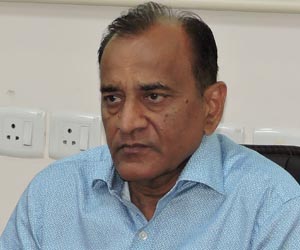Nepal has had more than a dozen governments since the monarchy was formally abolished in that country in 2008. Prime Ministers have come and gone before they had the time to settle down or had enough time to leave behind far-reaching impacts for the good of the people. The latest development in this game of thrones was the ouster of Pushpa Kamal Dahal Prachanda and his replacement by K.P. S. Oli. Prachanda had been in office for roughly 18 months before being eased out.
There are many factors for the continuing instability, but it is interesting to note that this phenomenon began after the dominance of Nepali Congress—the oldest and the largest national party—in Nepal’s political ecosystem was dented with the rise of the communist parties. Until then, the Nepali Congress had no real challenge and it had to only ensure that it did not invite the displeasure of the monarchy, which was all-powerful. Thus, governments were formed and felled between 1951-59 at the behest of the Shah dynasty which occupied the throne.
Things began to change from 2008. In the elections to the Constituent Assembly that year, the Communist Party of Nepal (Maoist) emerged as the single-largest party and Prachanda headed a coalition government with a bunch of other smaller parties from August that year until May 2009. A string of Prime Ministers and their governments followed thereafter. Barring thrice (when a Nepali Congress candidate was Prime Minister) and once (when an Independent occupied that post), the Prime Ministers were from the communist-Maoist ranks. The constant turmoil and jostling for leadership positions within the communist camp has been the primary reason for the frequent change of guard in Kathmandu. It would, therefore, be relevant to go back a little in time to understand the communist story in Nepal—a story abundant in complexities and twists and turns.
The seeds of communism were sown in 1956 by Mohan Bikram Singh, the son of a wealthy landlord who was close to the monarchy. Mohan Bikram Singh flirted briefly with the Nepali Congress before joining the Communist Party of Nepal (CPN). But the CPN was not very active those days. In 1974, Mohan Bikram Singh branched out to form the Communist Party of Nepal (Fourth Convention) along with Nirmal Lama. The Maoist parties of Nepal today trace their origins to the CPN (Fourth Convention)—also referred to as the CPN (Fourth Congress).
There were other communist parties too, and with their own leaders who nurtured high ambitions and were in conflict with the rest of their comrades. In 1983, the CPN (Fourth Convention) split and Mohan Baidya became the leader of the new group named CPN (Mashal). Six years later, Baidya stepped down and Prachanda took charge of the party. Also, a splinter group separated from Mashal and formed the CPN (Masal).
Meanwhile, developments of importance on the national stage had begun to take shape. In 1990, the Movement for the Restoration of Democracy was launched by a grouping of communist parties as well as the Nepali Congress. With a view to launch a stronger campaign, two communist outfits, the CPN (Marxist-Leninist) and the CPN (Marxist) merged to form the CPN (Unified Marxist-Leninist) or the CPN (UML). As if this is not mind-boggling enough, the CPN (Fourth Convention) and CPN (Mashal) got together to form the CPN (Unity Centre) with Prachanda as its leader. Another prominent communist leader, Baburam Bhattarai, broke away from CPN (Masal) along with his supporters and joined the CPN (Unity Centre); since the last named organisation, like many other communist-Maoist groups, was working underground, it floated its overt political arm, named the United People’s Front.
More mergers and splits followed in the communist camp, further complicating Nepal’s political landscape. CPN (Unity Centre) got renamed as CPN (Maoist), then it merged with the Unity-Centre (Masal) to form the Unified Communist Party of Nepal (Maoist). In 2012, the last-named outfit split and the splinter group under the leadership of Mohan Baidya Kiran called itself the CPN (Maoist).
While all this was going on, a process to get the various communist-Maoist groups into the mainstream was also underway. By 2013, many of them had joined the mainstream; in the Constituent Assembly elections that year, the UML emerged as the second-largest party after the Nepali Congress, while the UCPN (Maoist) came third. Work on the finalisation of a Constitution for the country that would be acceptable to all, including the Madhesi parties that had a strong presence in the plains, was also on; the Constitution was finally promulgated in September 2015.
In that same year, Oli became the Prime Minister, leading a coalition of the CPN (UML), UCPN (Maoist) and a few others. The following year saw another merger—this time of the UCPN (Maoist) with a clutch of other Maoist parties—and the CPN (Maoist Centre) came into being. That same year, Oli quit and was replaced by Prachanda, who was followed by Sher Bahadur Deuba of the Nepali Congress. Then Oli returned, and after him Deuba was back. Thereafter came Prachanda and, now, it is Oli again—the development happened after his CPN (UML) withdrew from the coalition led by Prachanda’s CPN (Maoist Centre). As a consequence, Prachanda lost the vote of confidence in Parliament and Oli, having beforehand struck a deal with the Nepali Congress, returned as Prime Minister.
How long will he last in this game of musical chairs, nobody knows. The People of Nepal though would be fervently hoping for stability and sound governance, for a change.
(The paper is the author’s individual scholastic articulation. The author certifies that the article/paper is original in content, unpublished and it has not been submitted for publication/web upload elsewhere, and that the facts and figures quoted are duly referenced, as needed, and are believed to be correct). (The paper does not necessarily represent the organisational stance... More >>
Image Source: https://www.therightnews.in/wp-content/uploads/2024/07/7-10.jpg











Post new comment